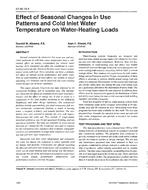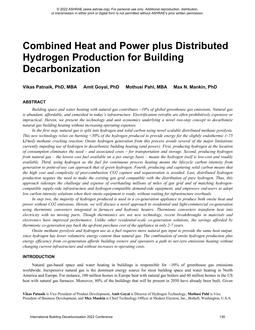Click here to purchase
To reduce indoor exposure to PM2.5, traditional high-efficiency filtration systems can be applied in buildings. However, the associated large pressure drop also results in high energy consumption. Because of the slip effect, electrospun nanofiber air filters can achieve high PM2.5 removal efficiency with a relatively low pressure drop, which may be used to reduce energy consumption. This study aimed to develop a semi-empirical model for predicting the pressure drop of nanofiber filters. 25 nylon nanofiber filters with different filter parameters (fiber diameter, filter thickness, and packing density) were fabricated. For each nanofiber filter, the pressure drop was measured under five different face velocities. Then, the pressure drop across electrospun nanofiber air filters was modeled using the filter parameters. The results indicated that the pressure drop was proportional to the face velocity and filter thickness. Also, the product of drag coefficient and Reynolds number was a function of both packing density and Knudsen number. The pressure drop across the nylon electrospun nanofiber filters predicted by the semi-empirical model was in good agreement with the experimental data with a median relative error of 4.3%.
Citation: 2019 Annual Conference, Kansas City, MO, Conference Papers
Product Details
- Published:
- 2019
- Number of Pages:
- 7
- Units of Measure:
- Dual
- File Size:
- 1 file , 2.8 MB
- Product Code(s):
- D-KC-19-C026


